The big winners from Tasmania’s 2024 State Budget
The first budget of the minority Liberal Government has been handed out full of cost-of-living relief. YOUR FULL GUIDE >>
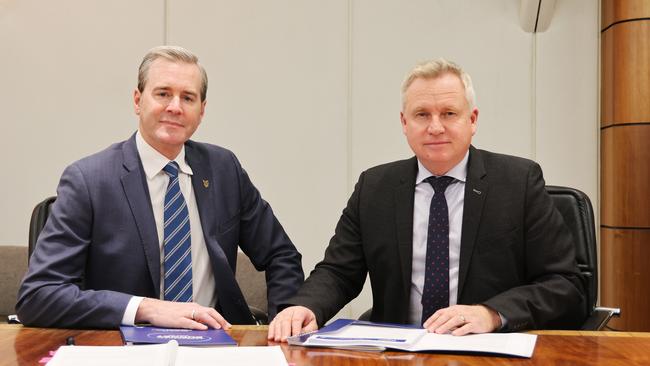
Tasmania
Don't miss out on the headlines from Tasmania. Followed categories will be added to My News.
Treasurer Michael Ferguson will attempt to rein in runaway government spending in a budget heavy on cost-of-living relief but burdened by increasing debt.
Mr Ferguson handed down the 2024/25 Budget in state parliament on Thursday, proclaiming it “a budget for the times”. It was four months late, thanks to the election.
The state blew its budget by $1.4bn to spend a record $10bn last financial year and will attempt to trim 3.5 per cent from last year’s expenditure to $9.7bn in 2024/25.
At the same time, revenue is expected to grow 4.2 per cent to $8.9bln.
Mr Ferguson has predicted a deficit of $792m for this financial year, with further shortfalls totalling $885m in the following three years, with each result an improvement on last financial year’s shock $1.5bln deficit.
Tasmania’s last budget surplus was in 2018/19 and the next is unlikely until 2028/29 at the earliest.

As a result, the state’s net debt will rise from $5.4bn in 2023/24 to $8.5bn in 2027/28.
Mr Ferguson attributed much of the $3.1bn increase to the extra $424m in costs associated with the Commission of Inquiry, $1.3bn delivering his party’s election promises, $550m in cost of living relief as well as continued billion-dollar-a-year infrastructure spending.
Interest payment on government borrowings, including for superannuation liabilities, will be 9.3 per cent of government spending in 2027/28.
There were no new or increased taxes in Thursday’s budget.
It includes $300m of efficiency dividends in the public sector over the next financial years – including $134m in health, $80m from education, $23m from Police, Fire and Emergency Management, $17m from justice and $15m from State Growth.
Smaller agencies are not exempt: for example, the Director of Public Prosecutions will need to find $500,000 worth of savings and the Governor and the Integrity Commission, $100,000 each.
State sector employee expenses in the budget are predicted to fall by 2.3 per cent in dollar terms or $90m on what was actually spent in 2023/24. Frontline roles have been exempted from any cutbacks.
And spending on infrastructure was reduced by 11 per cent — or $131m — to $1.1bn this financial year.

Mr Ferguson said the government was determined to be responsible but did not want to not to hand down a slash-and-burn budget.
“This is a budget that delivers on the government’s 2024 election commitments, invests in new infrastructure, fully responds to the recommendations from the Commission of Inquiry and contains additional outlays in cost of living relief and stronger public services, including in health, housing, education and transport,” he said.
The budget contained more than $550m in cost of living relief through electricity bill relief, public transport discounts, and rates, water and sewerage and stamp duty relief.
Mr Ferguson accused the federal government of failing to play its part, as its contribution, particularly in health, falls as a proportion of total spending.
“The Australian government has failed to slay the inflation dragon as promised and continues to shift costs to the states from federal responsibilities like Medicare, which should fund General Practice medical services, aged care services, NDIS, energy bill relief and even employment services,” he said.
The budget forecasts growth in state final demand of 2.5 per cent in 2024/25, up from 1.5 per cent last financial year, CPI growth down from 3.3 to 2.75 per cent and the unemployment rate steady at around 4.25 per cent.
The major government business enterprises are predicted to deliver $185m in dividends to the state coffers in 2024/25, up just $2.5m from the previous year.
Health
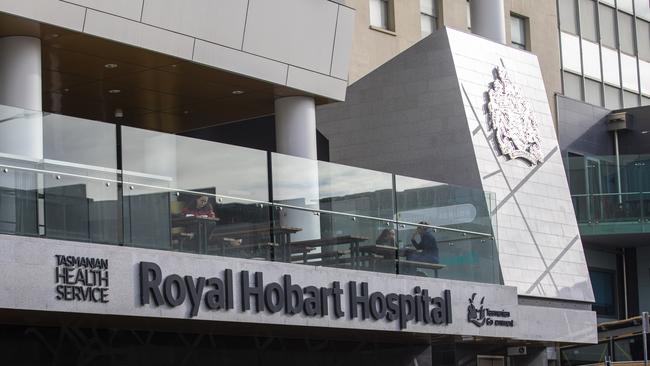
The government will boost mental services, target more GPs, build new ambulance stations across the state, and continue an ongoing recruitment campaign in the public hospital system, as part of a $12.9 billion investment in health over the next four years.
The $3.145 billion allocated for health in the 2024/25 budget represents 32 per cent of total government expenditure over the next financial year.
Treasurer Michael Ferguson has allocated $88 million over the forward estimate period to fund 44 news doctors and 25 nurses at Tasmania’s busiest emergency department at the Royal Hobart Hospital, and another $10 million to retain nurses in the state.
The government will invest $39.8 million on employing 78 new full-time paramedics, which will include 27 community paramedics, and another $3.4 million for the GP scholarship program to help fund the relocation costs of medicos moving into Tasmania’s regional and rural communities.
Another $17.5 million will be spent over four years funding the government’s GP NOW Rapid Response Unit, a team of 10 doctors that can be deployed into local communities in the event of a sudden GP surgery closure.
The construction of new ambulance stations across the state, and purchase of new vehicles, will be paid for through a $21.7 million allocation over the forward estimates.
Mental health services will also receive a significant funding increase, with $111.6 million to be spent to deliver an extra 15 adult mental health beds, 12 child and adolescent beds, and a 40-bed older-persons facility, at the St Johns Park Health and Welling precinct in Hobart.
The government will also invest $10 million to construct a new mental health facility next to the Launceston General Hospital, and another $7.6 million for the Devonport Mental Health Hub.
The government will expand the existing Mental Health Emergency Response service operating in the state’s south, with a $5 million, two-year pilot for the north.
Regional mental health organisation Rural Alive and Well will also receive $1.6 million over four years for its wellbeing outreach services.
The budget also set aside $9.8 million for the mental health services of young people in out-of-home care.
Cancer treatment is another budget priority, with $15 million allocated for a new diagnostic breast imaging clinic, and another $10 million for the first stage of a new Cancer Wellness Centre.
At the Launceston General Hospital, $39.5 million will be spent across the next four years to begin doubling the size the emergency department, $16 million will go towards completing the hospital’s helipad, while $4.7 million will be invested in a new state of the art surgical robot which will treat prostate and kidney cancers.
A new home for the Royal Flying Doctor Service will be built with a $6 million budget allocation, the Treasurer said.
New mothers will welcome an $18 million investment to help the North West Maternity Serves transition into the state health system, while $4 million will be spent at the RHH Mother Baby Unit to treat mental health concerns such as postnatal depression.
The government also announced it would fund free TV and Wi-Fi for patients in all major Tasmanian hospitals.
The Treasurer said the budget would make it easier for Tasmanians to access mediation, by allowing pharmacists to provide UTI medication and extend scripts for oral contraceptives.
Education
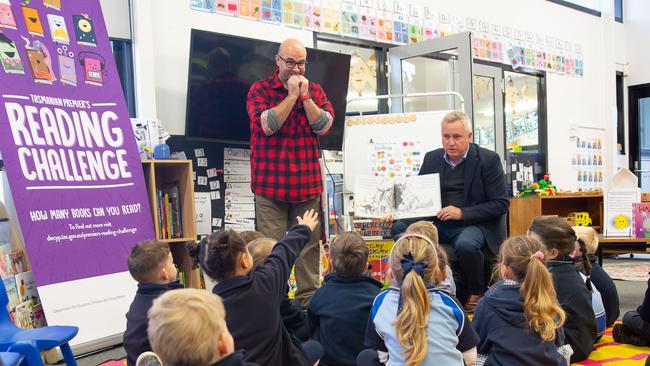
A $188 million school building blitz forms the centrepiece of the Tasmanian government’s planned $9.5 billion education budget over the next four years of the budget forward estimates.
The $2.310 billion the government will spend on education in 2024/25 represents just under a quarter of Tasmania’s total fiscal expenditure over the next year, making it the second-highest funded sector after health.
Major infrastructure upgrades have been slated for 15 schools across the state, including at Burnie Primary, Clarence High, Risdon Vale Primary, and Campbell Town District High.
The budget has also allocated $40 million for upgrades to the North West Support School at Burnie, and for a brand new campus at Devonport.
The government will spend $12.6 million on upgrading VET facilities in Tasmania’s schools, colleges, and trade training centres, while $9.1 million will be directed to improving teacher accommodation in remote areas of the state.
While $10 million has been earmarked to upgrade sports courts and playgrounds in Tasmanian schools, another $14.6 million will be spent doubling the number of campuses hosting the Healthy School Lunches program.
The Treasurer announced $5.1 million to help meet the needs of students with disability, $3.5 million to attract teachers into schools that were difficult to staff, and $3 million to improve literacy outcomes in the state.
Farm-based education programs will receive an $800,000 injection, while $500,000 will pay for 20 extra scholarships for speech pathology university students.
The government has also prioritised early education services, allocating $32 million for four new Child and Family Learning Centres in Longford, Scottsdale, Huonville, and Smithton.
“We’re ensuring children aged 0-5 have access to quality early education and health services, and our new super-sized CFLCs will offer support from psychologists, speech pathologists and social workers for children in these areas,” Tasmanian Minister for Education, Jo Palmer, said.
“We’ve already seen the positive impacts of our six new CFLCs, and four more are on the way.
“Through the budget, we’re delivering a $5 million Early Years Workforce Development Fund aimed at growing, upskilling and supporting the ECEC workforce.”
“The Fund will deliver 200 scholarships for students to undertake an education and care qualification and 20 additional scholarships for speech pathologists and psychologists.”
Infrastructure

Despite claims of ‘record investment’ in major infrastructure projects across the state, the 2024-25 Budget delivered an 11 per cent drop in funding allocation for its “pipeline of the future”.
An additional $5.1b was invested into “job-creating projects” over the next four years, totalling around $1.103b spent this year.
This is split between $1.9b for new and upgraded roads and bridges, $649m in health infrastructure, $359m in schools and training facilities and $287m for correctional facilities and Police assets.
Work will get underway through funding on duplicating the Bass Highway between Launceston and Deloraine into a four-lane link in the north, establishing a new Wynyard emergency services hub in the north-west and building three new ferry terminals at Lindisfarne, Wilkinsons Point and Sandy Bay among other projects.
This is down from the Tasmanian Government’s infrastructure 2023-24 budget of $1.234b.
State-owned businesses like Tasmanian Railway, Hydro Tasmania and Tasmanian Irrigation, will contribute $1.2b in funding over the next four years for projects like the $264.2m for new irrigation schemes.
Premier Jeremy Rockliff said the infrastructure investment is building modern assets statewide that will “underpin our economic activity and growth”.
“We are focused on investing in contemporary and economic-enabling infrastructure across Tasmania, as well as delivering new and improved social assets,” he said.
“This $5.1b is the pipeline of the future.
“Nearly $557m in upgrades to the state’s roads and bridges are being delivered this financial year, building on the government’s strong reputation in rebuilding Tasmania’s roads and bridges, making them safe and efficient.
“One of the key uplifts in roads is on maintenance, with more than $432m committed over the next four years.”
Around $355m provided in the 2023-24 Budget from the Tasmanian Government will follow through this financial year, allowing work to begin on the multi-purpose arts, entertainment and sport Macquarie Point Urban Precinct Project.
This is backed by $240m in Australian Government funding and $15m from the AFL to be received in 2027-28.
Yet Macquarie Point was identified as an expenditure risk due to the project being subject to the “same ongoing supply and cost risks that other major projects have experienced”.
This was applied to both the Urban Precinct project and the wastewater treatment plant relocation.
Parks and Environment
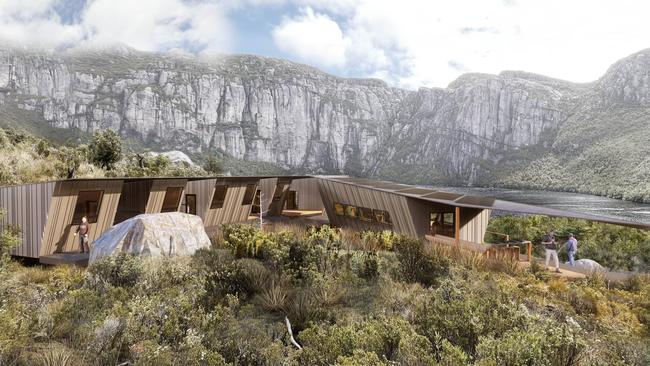
Access to Tasmania’s parks and wilderness areas will be increased in the budget, led by a $30.3 million allocation to construct the state’s newest, multi-day hut-based walk in the Tyndall Range.
And the government will spend an additional $8 million to establish a Tasmanian Threatened Species Fund which will directly support the conservation priority species including the Maugean Skate, Swift Parrot, and Tasmanian Devil.
The Treasurer also announced $14 million to begin a new visitor gateway at Freycinet National Park, $6.2 million for additional visitor facilities on Maria Island, and $2.9 million to upgrade camp sites at Cockle Creek in the state’s far south.
Plans to make the northern ski resort of Ben Lomond a year-round destination will be progressed with $2.3 million in funding, while $1.8 million be spent on improving disability access in the state’s parks and reserves.
Minister for Parks and Environment, Nick Duigan, said work had begun on an online booking system to make securing a camping spot in Tasmanian parks and reserves easier.
“The contemporary system will help provide a seamless experience for visitors booking campsites – as well as other parks products and services, including parks passes, walks and tours,” Mr Duigan.
“We have a strong track record of investing in our parks and reserves, but we recognise we must continually invest in our parks to keep our competitive advantage we have in our natural environment.”
Justice and Corrections

The state government will spend $9.6 million over four years providing the Office of the Director of Public Prosecutions increased capacity to respond to the Commission of Inquiry recommendations, the Treasurer has said.
Public access to the Tasmanian justice system will be further increased with an additional $1.2 million over four years for the Just Healthy Families Program, providing legal advice for those impacted by family violence, and $2.8 million for victims of crime counselling services.
“Our justice system is critically important, and this Budget ensures the necessary funding is in place to support and implement key reforms,” Tasmanian Attorney-General Guy Barnett said.
“We know that following the Commission of Inquiry, support services have experienced increased demand, and this additional funding will ensure those who need support, can continue to receive it.”
In order to meet the COI recommendations, the government will spend $1.4 million on audio-visual communications equipment in Tasmanian courtrooms, $4.2 million a year on the Office of the Independent Regulator, and an additional $4.8 million to help the State Litigation Office to respond to increasingly complicated matters.
The government will spend $700,000 over the next four years to help the Office of the Ombudsman to speed up Right to Information processes, and another $800,000 for the Integrity Commission to actively monitor investigations conducted by public authorities.
The budget will provide $38 million for a new, 52-bed maximum security unit at Risdon Prison, and $15.9 million over three years to fund upgrades at the Ron Barwick minimum security facility.
Another $4.1 million has been allocated to rehabilitative drug and alcohol programs for Risdon inmates, while an extra $12 million will be spent on a mobile duress alarm replacement project, to improve the safety of corrections staff.
Small Business
Tasmanian small businesses will be able to access grants of up to $10,000 for small capital purchases, through a $1 million fund established in the state budget.
Grants of up to $5000 will also be made available to multicultural small businesses, as part of a $400,000 pool designed to build capacity and develop new skills.
A further $400,000 has been allocated to assist regional chambers of commerce across Tasmania consult on the Small Business Growth Strategy.
The Treasurer said the government would continue its annual $65,000 contribution to the Tasmanian Small Business Council.
Primary Industry
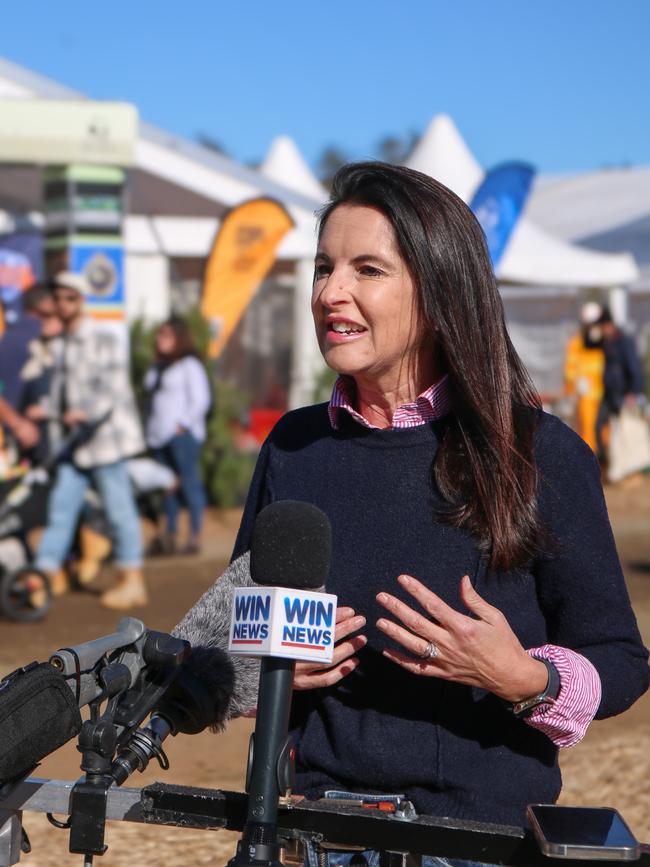
The government has announced a $13 million increase to the state’s biosecurity budget, with a $7.9 million boost for frontline biosecurity services, $3 million over the forward estimates to strengthen overall resources, and $1.2 million over three years for additional biosecurity officers.
Minister for Primary Industries and Water, Jane Howlett, said $3.2 million would be invested on allowing the RSPCA inspectorate to effectively safeguard animal welfare, and $2.5 million to boost Tasmania’s Strategic Industry Partnership Program.
Nearly $2 million would be allocated for the Tasmanian Institute of Agriculture to undertake research, development, and education.
“The budget backs our farmers and champions our agricultural producers who put food on our tables, provide thousands of jobs, and support our rural and regional communities,” Minister Howlett said.
“Our premium produce is the envy of the world – but this doesn’t just happen by accident.
“This is a result of strong partnerships with the agriculture sector, working with businesses and industry to deliver outcomes and to innovate for sustainable growth.”
The budget also includes $1.5 million over three years to drive growth in Tasmanian wine production, $1.7 million to establish Tasmania’s first shearing and wool innovation centre in the Midlands, $400,000 to attract and retain veterinarians in rural and regional areas, and $350,000 to support the construction of a permanent multi-use structure at the Agfest site near Carrick.
Originally published as The big winners from Tasmania’s 2024 State Budget




